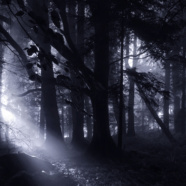What Are These “Weeds”?
Many aquatic plants exist within Chautauqua Lake; its nutrient-rich sediments provide a fertile growing bed for vegetation. Some of these plants are native to our area and provide critical ecological and environmental benefits, while others were introduced from distant locales and have been negatively impacting the ecological function, recreational and economic value of Chautauqua Lake. Surprisingly, some of the most prevalent invasives have been with us for decades already, while a steady stream of nearby or newly arriving species poses additional challenges to the future health of the...
Read MoreAn RTPI Intern Explains Hemlock Woolly Adelgid Surveys
RTPI Survey – February 14, 2020 by Taylor Haight; Jamestown Community College Student/RTPI Intern On Valentine’s Day, volunteers from Jamestown Community College and the community participated in an HWA survey at Roger Tory Peterson Institute and JCC preserves. Hemlock Woolly Adelgid, or HWA, is an invasive, aphid-like insect that feeds on the sap of hemlock trees. Feeding disrupts the flow of nutrients to the twigs and needles and could lead to the death of the tree within four to ten years. Since it’s first detection in the early 1920s, HWA has spread to 17 states, and now occupies more...
Read MoreHelp Wanted: Great Backyard Bird Count
Over President’s Day weekend (Friday, February 14 thru Monday, February 17, 2020), bird enthusiasts of all ages and abilities throughout the world are urged to count birds in their backyards or local parks as part of the annual Great Backyard Bird Count. It doesn’t cost money. You can do it “bare-handed” just by watching out your kitchen window. It’s fun and educational. And it really helps contribute valuable information to bird conservation. The Falconer Public Library will host a free indoor introduction to the Great Backyard Bird Count on Wednesday, 02/12 from 5:30 – 6:00 PM....
Read MoreRTPI to Host “Illuminating the Dark Side of Nature” Book Club
Program Theme: Illuminating the Dark Side of Nature It’s easy to find beauty in the natural world. Literature is filled with descriptions of breathtaking landscapes, magnificent creatures, and meaningful experiences in the great outdoors. Yet, nature also has its dark places – filled with curiosities that we often fear. Participants in this new Reading and Discussion series will explore some of the strange and mysterious corners of the natural world – as they venture through contemporary pieces of literature- into places they may otherwise be reluctant to probe. Program...
Read MoreCitizen Science Opportunity: Protect Our Hemlock Trees
Hemlock Woolly Adelgid is an aphid-like insect, originating from Asia that feeds off of the food storage cells below the needles of an Eastern Hemlock tree and hides itself under white woolly masses for protection. Within only a matter of 4-10 years an individual tree can succumb to an HWA infestation if left unnoticed. This deadly bug has been progressively moving closer to our area as it has spread throughout much of the eastern United States, leaving massive stands of hemlocks dead in their wake. Early detection of this particular pest is crucial as the spread of HWA can be managed....
Read More








